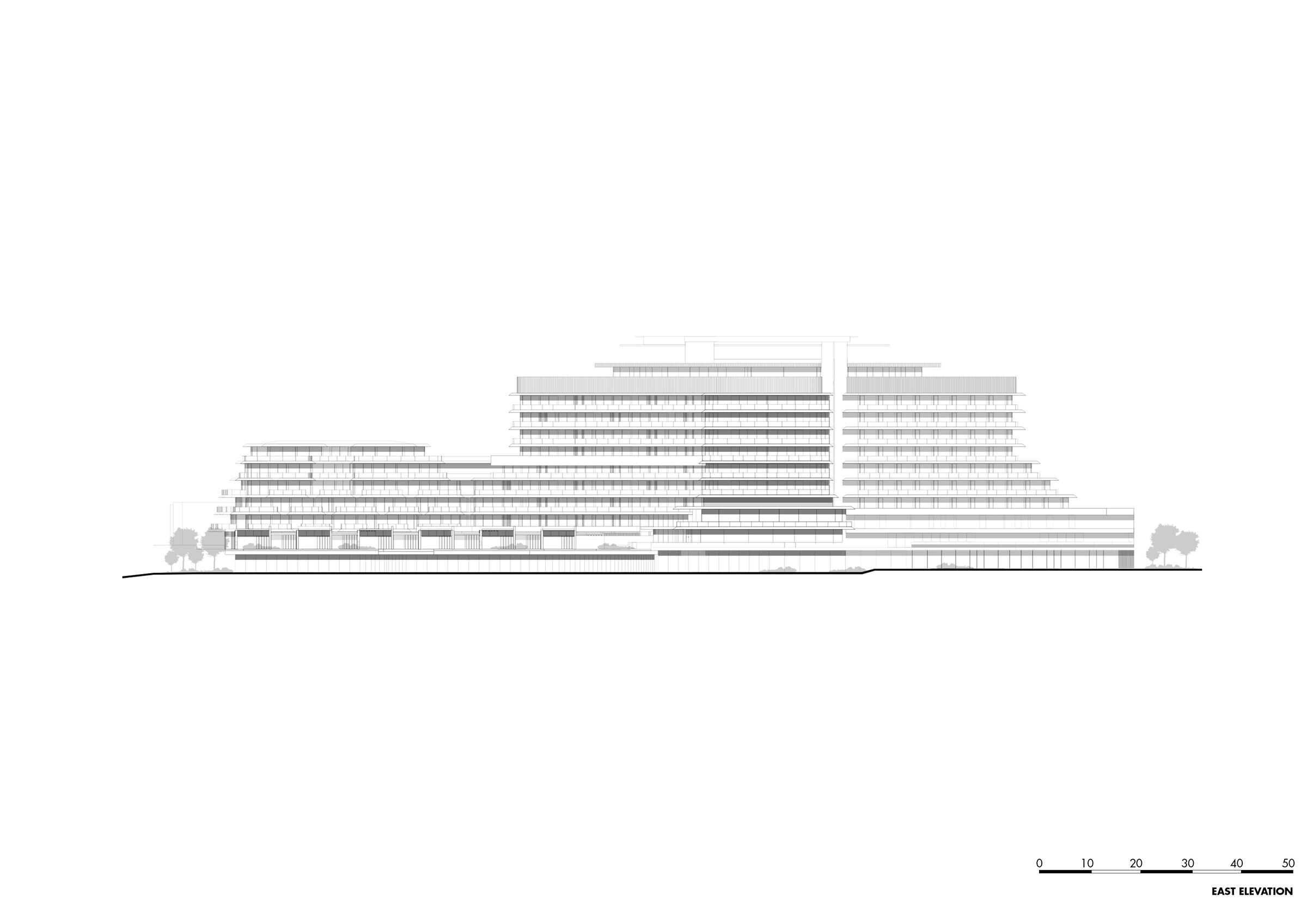Swissotel Resort and Residences Çeşme is a transformation project that upcycled the existing 11-storey hotel, which was originally constructed in 1997. Instead of demolishing the building and starting anew, Dilekci Architects aimed to extend the building’s lifespan by retaining as much of the existing structure as possible, thereby minimizing its carbon footprint. By adding a new residential function to the hotel, the project serves as an example of adaptive reuse in architecture, transforming the building not only in the environmental context but also in the urban and social.



The existing building, Sheraton Çeşme Hotel, was coming to the end of its lifespan since it was built in accordance with the 1988 Earthquake Regulations that became obsolete after the major earthquake in Izmit in 1999. There were also problematic additions and extensions to the main hotel building over time for different uses such as the congress centre and cafe, which disrupted the silhouette and overall massing.
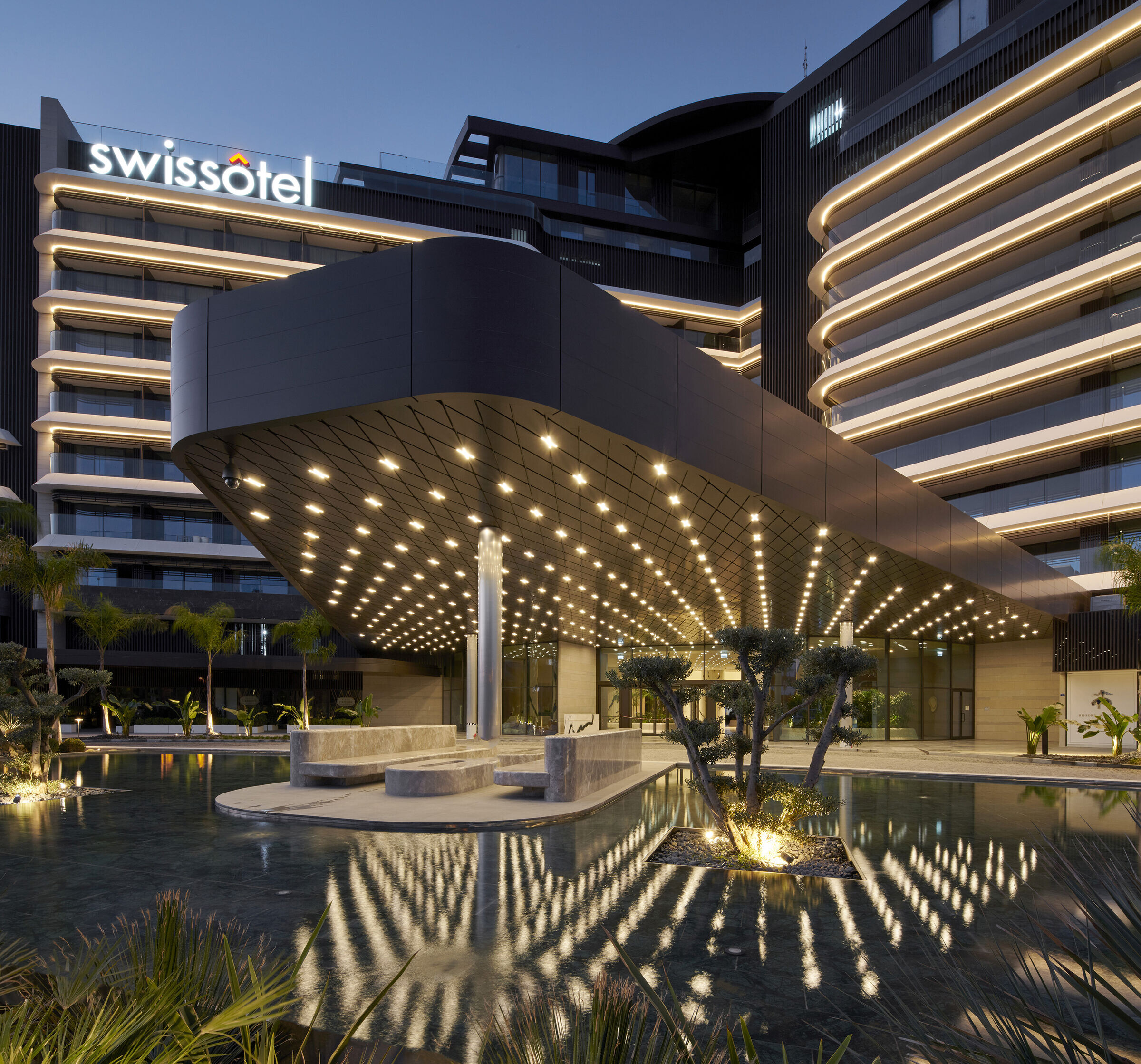

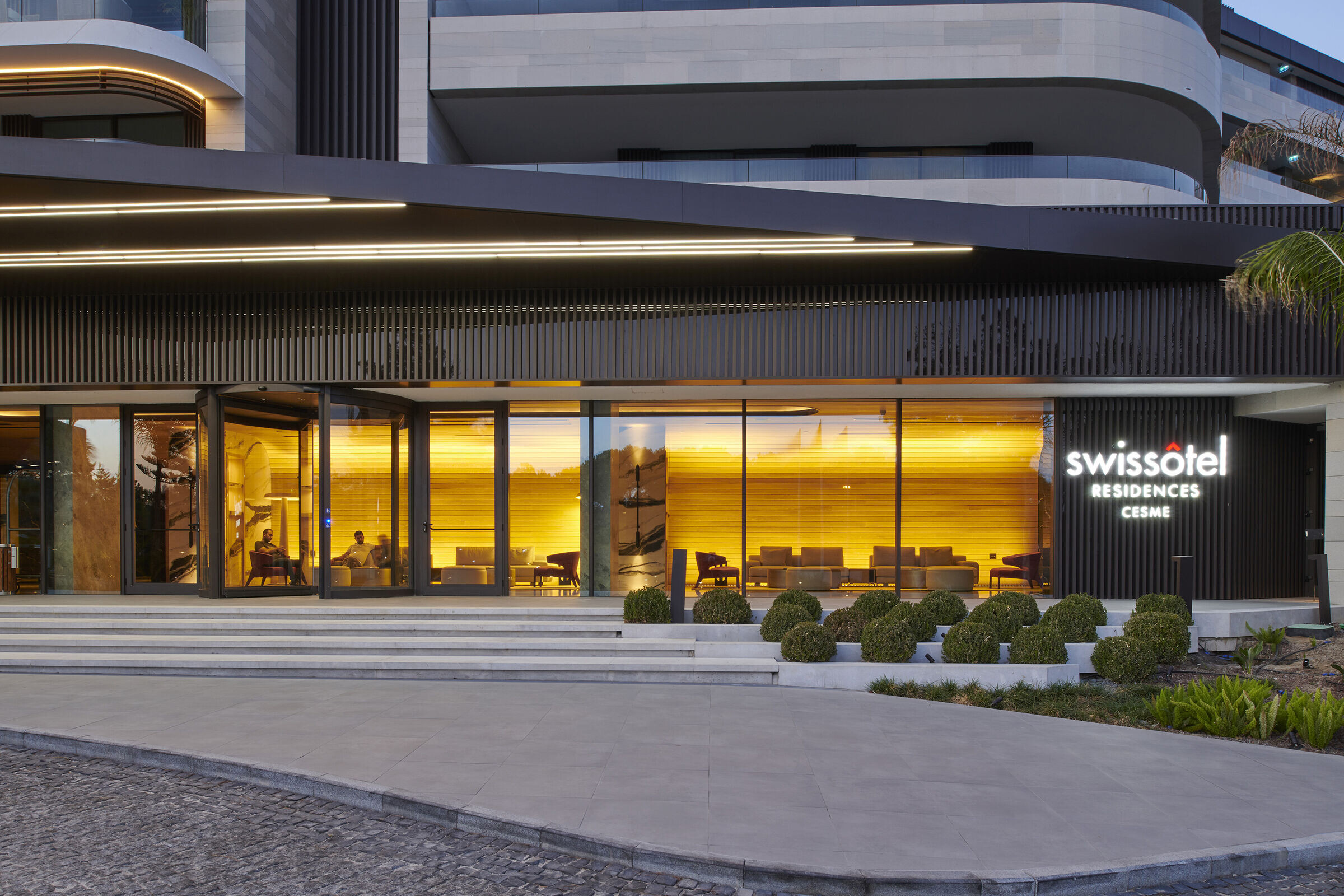
The client brief requested a more contextual and integrated design for these functions, a reduction of the number of hotel rooms from 400 to 260 and the addition of 110 residential units and 7 private villas. In order to achieve this, the old building was cleared of its extensions. One of the key design decisions was to establish a connection with the city through a silhouette that is compatible with its immediate surroundings.
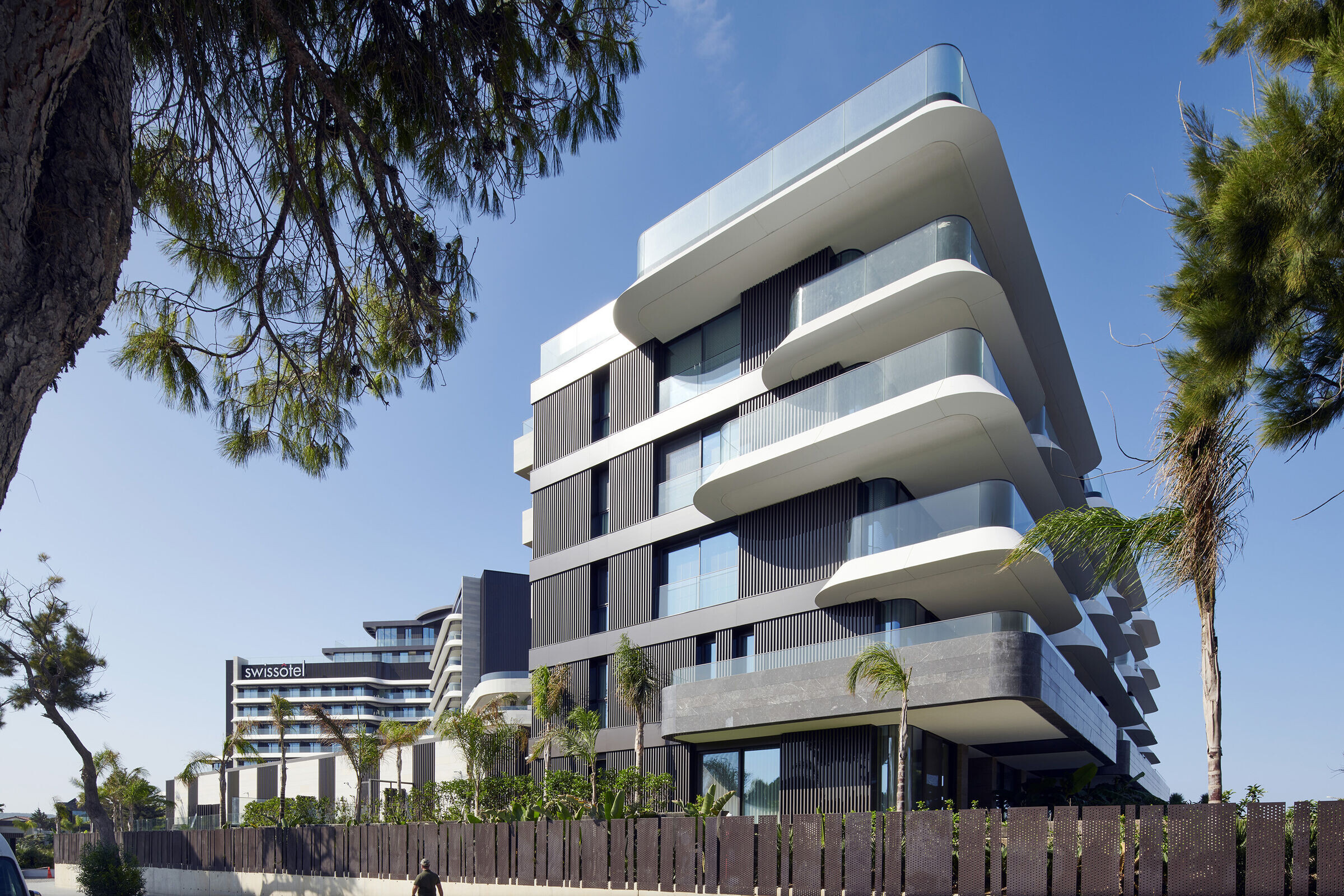

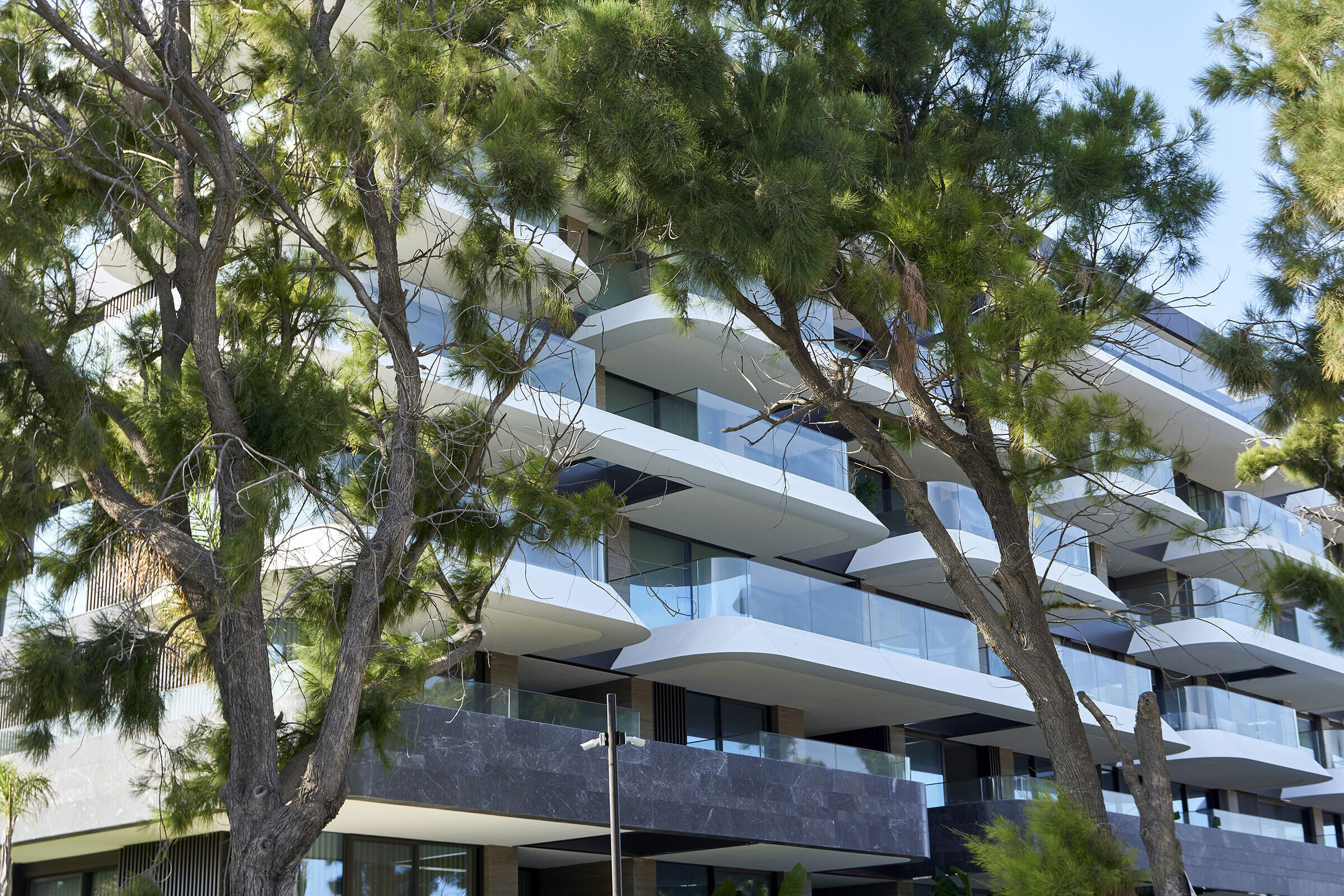
The sustainability strategy was built around the idea of keeping as much of the existing structure as possible. After a thorough analysis of the existing structures, it was decided that the main building could be strengthened to comply with the current earthquake regulations. In addition, the steel structure obtained from the old congress centre could be reused in the new extensions. As a result, 74% of the existing structure and 97% of the existing core have been retained. Therefore, the project saved 5,650,000 kg of carbon, equivalent to 70,625 hours of flight of a Boeing 747 aircraft with a capacity of 400 passengers.
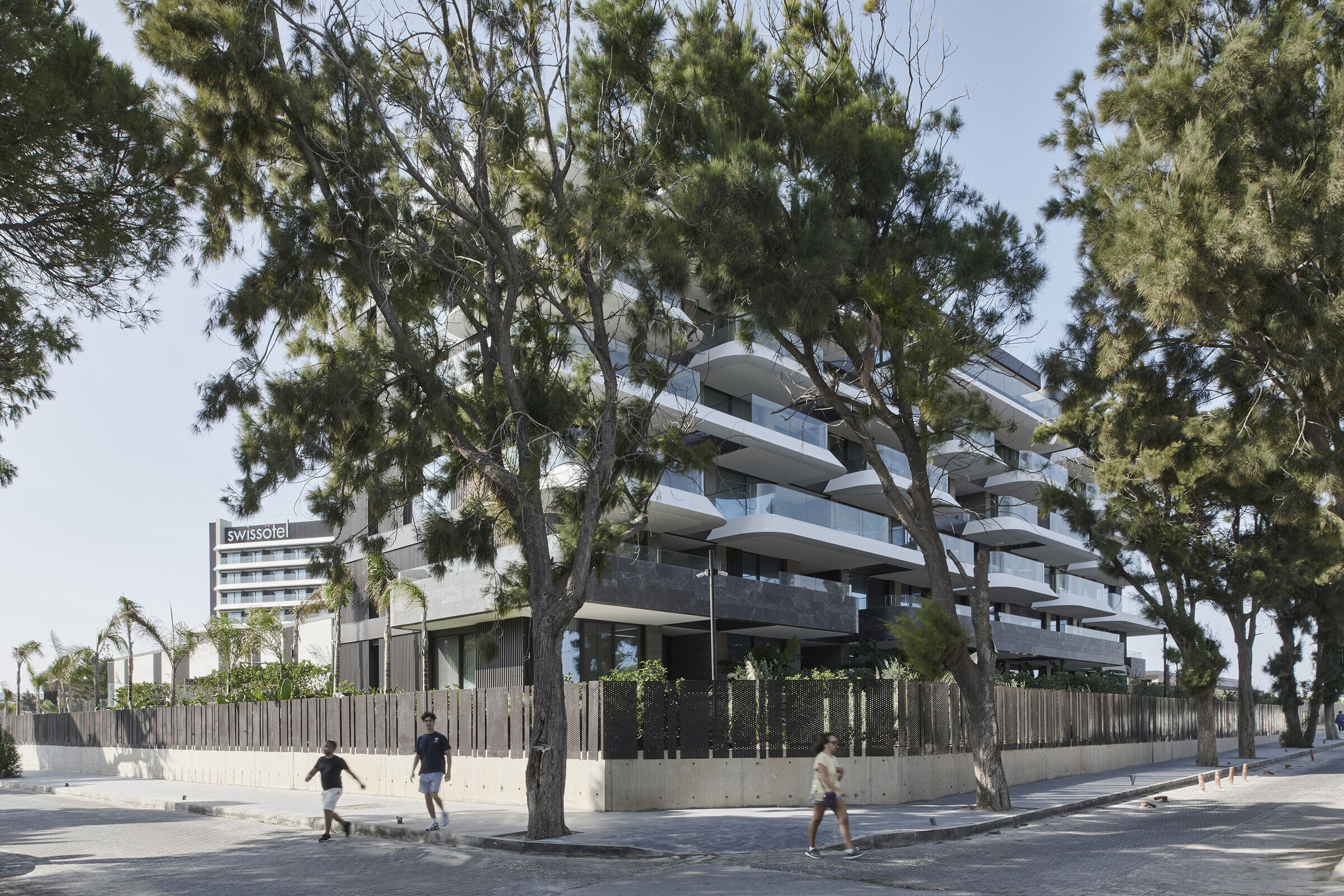

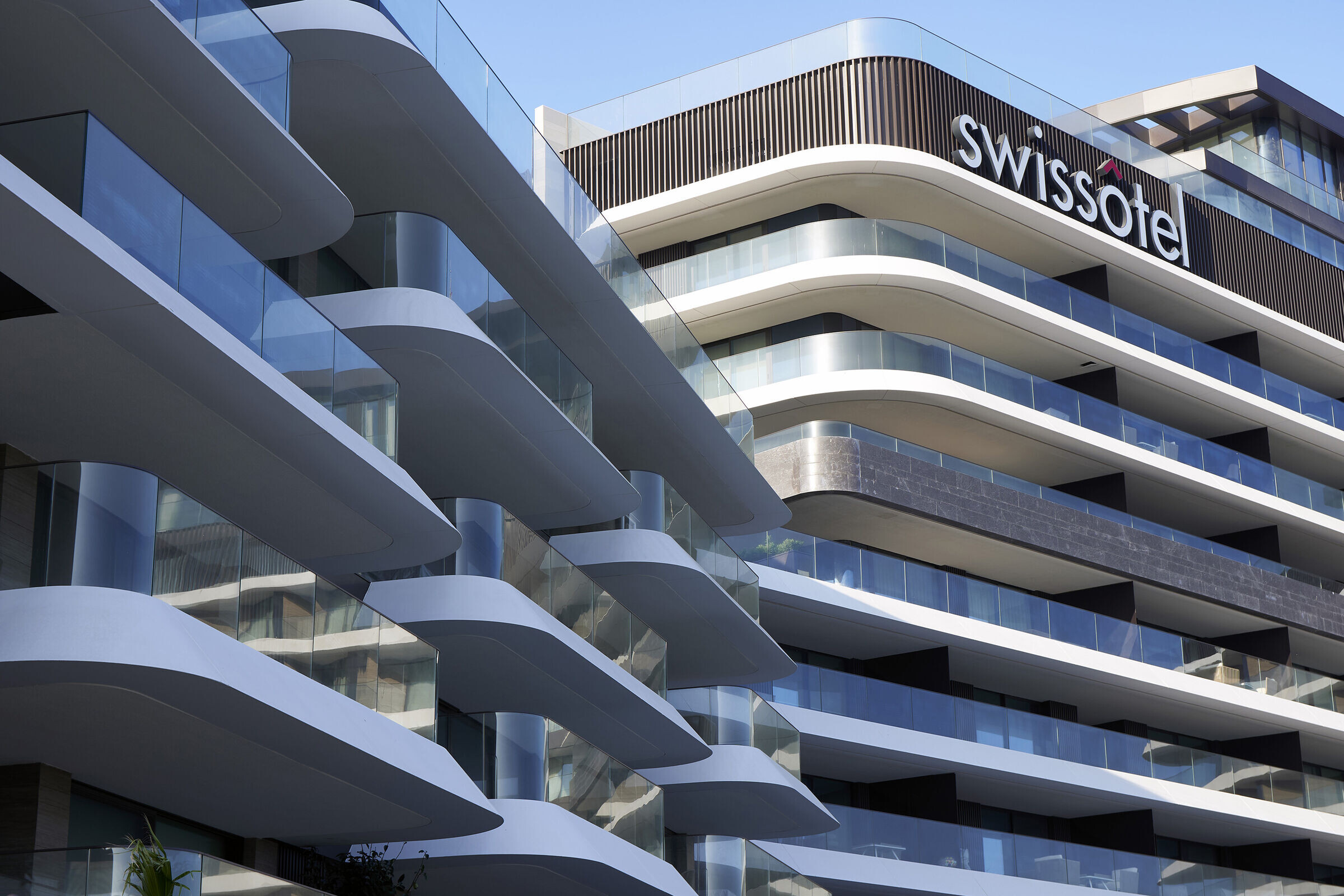
The hotel also includes a congress centre of 600 m2 and meeting rooms of 800 m2. The hotel and the newly added residential buildings speak the same design language, yet they are physically separated with independent pool areas.
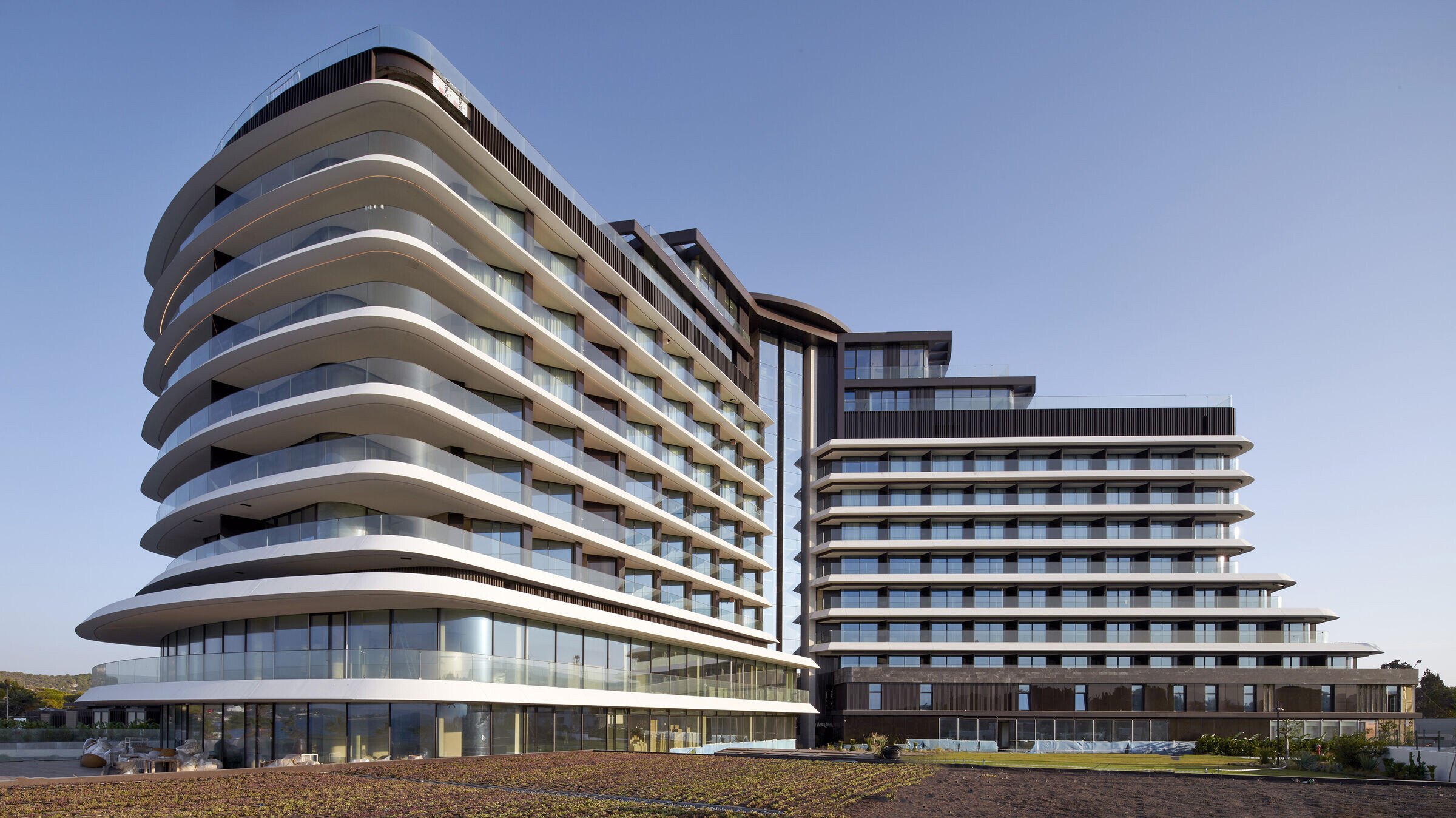
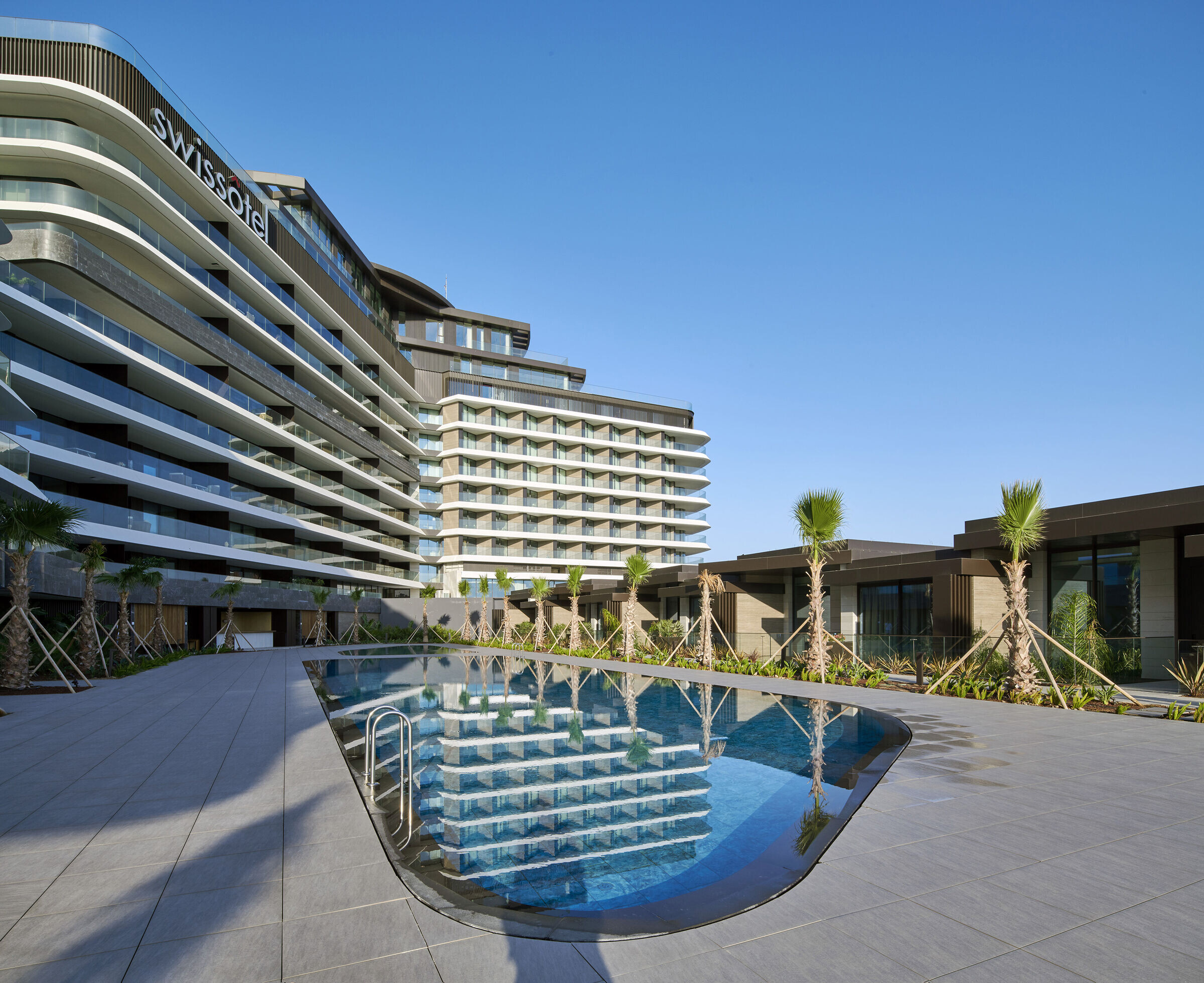

The climatic data of the site was carefully analysed and used as a key input in design to ensure that the northern wind moves gently through the building, helping it breathe during the hot summer months. The newly extended slabs of the old structure, together with the new façade design, form spacious terraces on each floor, maximizing the beautiful Aegen sea views, while providing shading and privacy for the lower levels with horizontal parapets.

